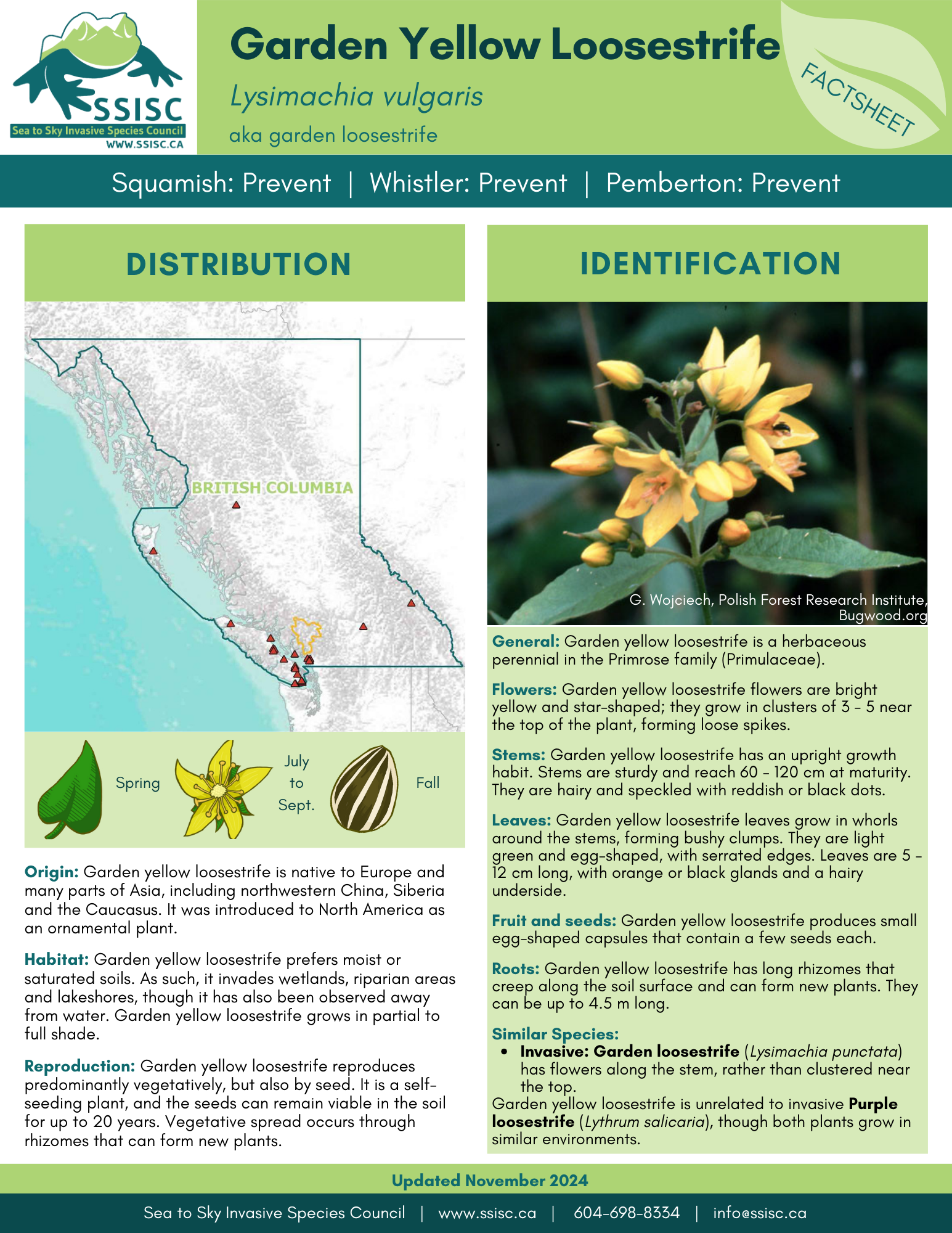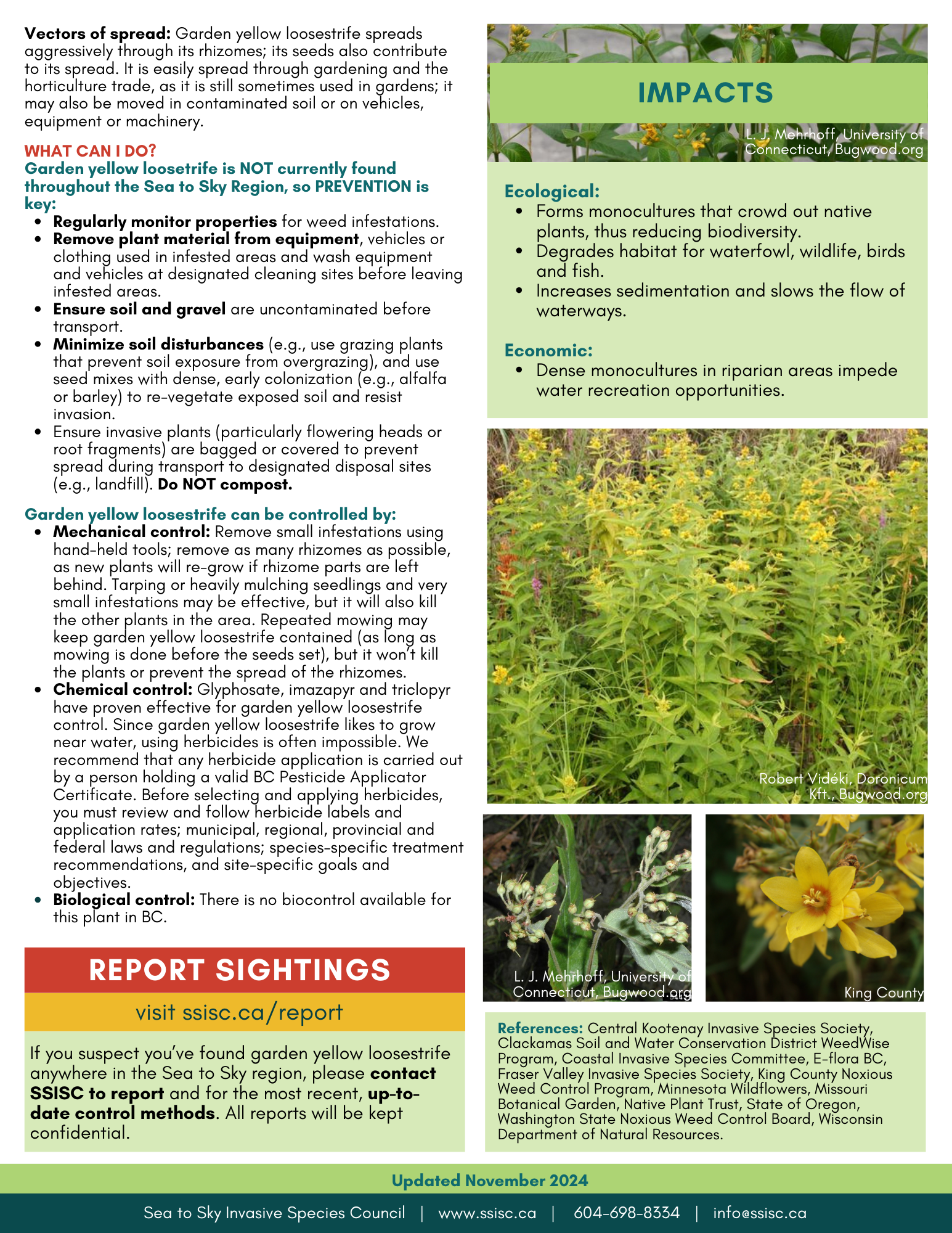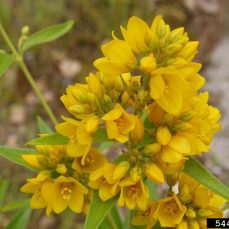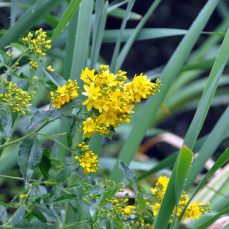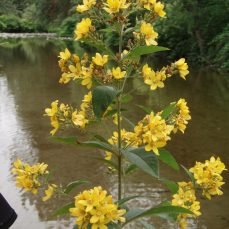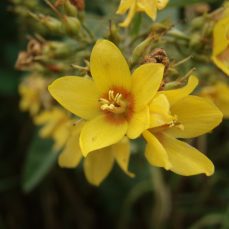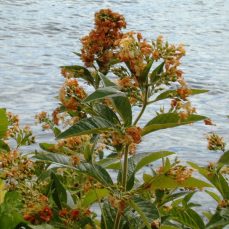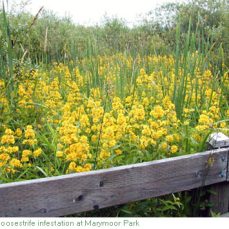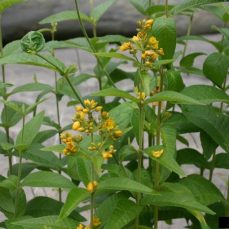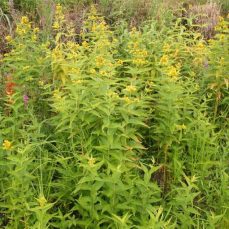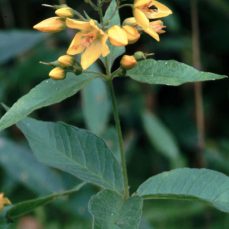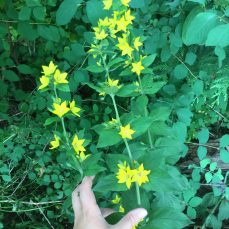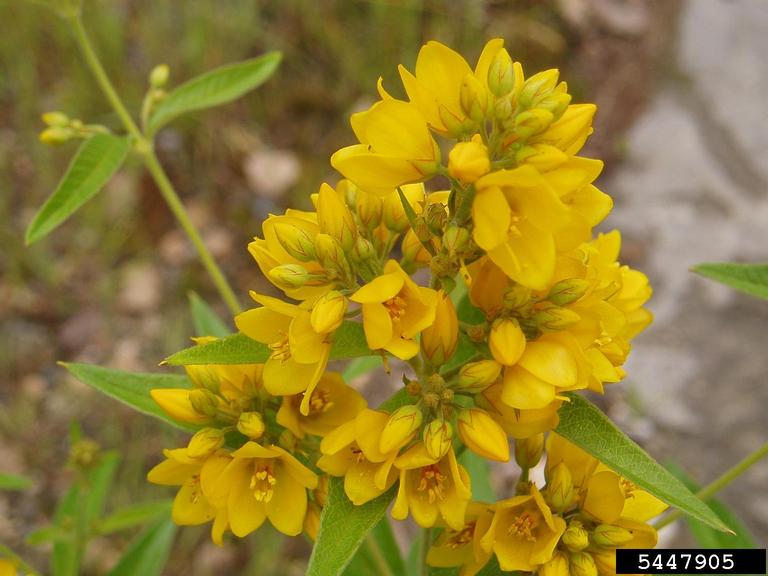
Photo Credit: Leslie J. Mehrhoff, University of Connecticut, Bugwood.org

Management Category
Squamish
Whistler
Pemberton
Vectors of Spread
Synonyms
Garden yellow loosestrife is also known as garden loosestrife.
ID Characteristics
General: Garden yellow loosestrife is a herbaceous perennial in the Primrose family (Primulaceae).
Flowers: Garden yellow loosestrife flowers are bright yellow and star-shaped; they grow in clusters of 3 – 5 near the top of the plant, forming loose spikes.
Stems: Garden yellow loosestrife has an upright growth habit. Stems are sturdy and reach 60 – 120 cm at maturity. They are hairy and speckled with reddish or black dots.
Leaves: Garden yellow loosestrife leaves grow in whorls around the stems, forming bushy clumps. They are light green and egg-shaped, with serrated edges. Leaves are 5 – 12 cm long, with orange or black glands and a hairy underside.
Fruit and seeds: Garden yellow loosestrife produces small egg-shaped capsules that contain a few seeds each.
Roots: Garden yellow loosestrife has long rhizomes that creep along the soil surface and can form new plants. They can be up to 4.5 m long.
Similar Species
Invasive

Photo credit: Rob Routledge, Sault College, Bugwood.org
Large yellow loosestrife (Lysimachia punctata) has flowers along the stem, rather than clustered near the top.
Garden yellow loosestrife is not related to purple loosestrife (Lythrum salicaria), though both plants grow in similar environments.
Habitat and Origin
Garden yellow loosestrife is native to Europe and many parts of Asia, including northwestern China, Siberia and the Caucasus. It was introduced to North America as an ornamental plant.
Garden yellow loosestrife prefers moist or saturated soils. As such, it invades wetlands, riparian areas and lakeshores, though it has also been observed away from water. Garden yellow loosestrife grows in partial to full shade.
How it Spreads
Garden yellow loosestrife reproduces predominantly vegetatively, but also by seed. It is a self-seeding plant, and the seed can remain viable in the soil for up to 20 years. Vegetative spread occurs through rhizomes that can form new plants.
Garden yellow loosestrife spreads aggressively through its rhizomes; its seeds also contribute to its spread. It is easily spread through gardening and the horticulture trade, as it is still sometimes used in gardens; it may also be moved in contaminated soils or on vehicles, equipment or machinery.
Impacts
Ecological:
- Forms monocultures that crowd out native plants, thus reducing biodiversity.
- Degrades habitat for waterfowl, wildlife, birds and fish.
- Increases sedimentation and slows the flow of waterways.
Economic:
- Dense monocultures in riparian areas impede water recreation opportunities.
Prevent the Spread
Garden yellow loosestrife is NOT currently found in the Sea to Sky region, so PREVENTION is key:
Learn to identify garden yellow loosestrife: Use the images presented on this profile page.
What to do if you spot it: You can report any garden yellow loosestrife sighting by visiting our reporting page..
DO:
- Regularly monitor properties for weed infestations.
- Remove plant material from equipment, vehicles or clothing used in infested areas and wash equipment and vehicles at designated cleaning sites before leaving infested areas.
- Ensure soil and gravel is uncontaminated before transport.
- Minimize soil disturbances (e.g., use grazing plants that prevent soil exposure from overgrazing) and use seed mixes with dense, early colonization (e.g., alfalfa or barley) to re-vegetate exposed soil and resist invasion.
- Ensure plants (particularly flowering heads or root fragments) are bagged or covered to prevent spread during transport to designated disposal sites (e.g. landfill).
DO NOT:
- Plant garden yellow loosestrife in a garden, no matter how well-contained its enclosure may seem.
- Move soil that has been contaminated with garden yellow loosestrife.
- Unload, park, or store equipment or vehicles in infested areas; remove plant material from any equipment, vehicles, or clothing used in such areas and wash equipment and vehicles at designated cleaning sites before leaving infested areas.
- Compost garden yellow loosestrife!
Control
Mechanical Control:
- Remove small infestations using hand-held tools; remove as many rhizomes as possible, as new plants will re-grow if rhizome parts are left behind.
- Tarping or heavily mulching seedlings and very small infestations may be effective, but it will also kill the other plants in the area.
- Repeated mowing may keep garden yellow loosestrife contained (as long as mowing is done before the seeds set), but it won’t kill the plants or prevent the spread of the rhizomes.
Chemical Control:
- Glyphosate, imazapyr and triclopyr have proven effective for garden yellow loosestrife control.
- Since garden yellow loosestrife likes to grow near water, using herbicides is often impossible.
We recommend that any herbicide application is carried out by a person holding a valid BC Pesticide Applicator Certificate. Before selecting and applying herbicides, you must review and follow herbicide labels and application rates; municipal, regional, provincial and federal laws and regulations; species-specific treatment recommendations, and site-specific goals and objectives.
Biological Control:
- There is no biocontrol available for this plant in BC.
Sea to Sky Distribution
Garden Yellow Loosestrife Factsheet
Having trouble viewing the factsheet? Don’t worry, all the information is included on this page. You can also contact us with any questions.
References
- Central Kootenay Invasive Species Society, Garden Loosestrife
- Clackamas Soil and Water Conservation District WeedWise Program, Garden loosestrife
- Coastal Invasive Species Committee, Yellow Loosestrife
- Electronic Atlas of the Flora of BC, Lysimachia vulgaris L.
- Fraser Valley Invasive Species Society, Garden Loosestrife
- King County Noxious Weed Control Program, Garden Loosestrife
- Minnesota Wildflowers, Lysimachia vulgaris (Garden Loosestrife)
- Missouri Botanical Garden, Lysimachia vulgaris
- Plant Trust, Lysimachia vulgaris – garden yellow-loosestrife
- State of Oregon, Garden Loosestrife Profile
- Washington State Noxious Weed Control Board, Garden Loosestrife
- Wisconsin Department of Natural Resources, Garden Yellow Loosestrife


